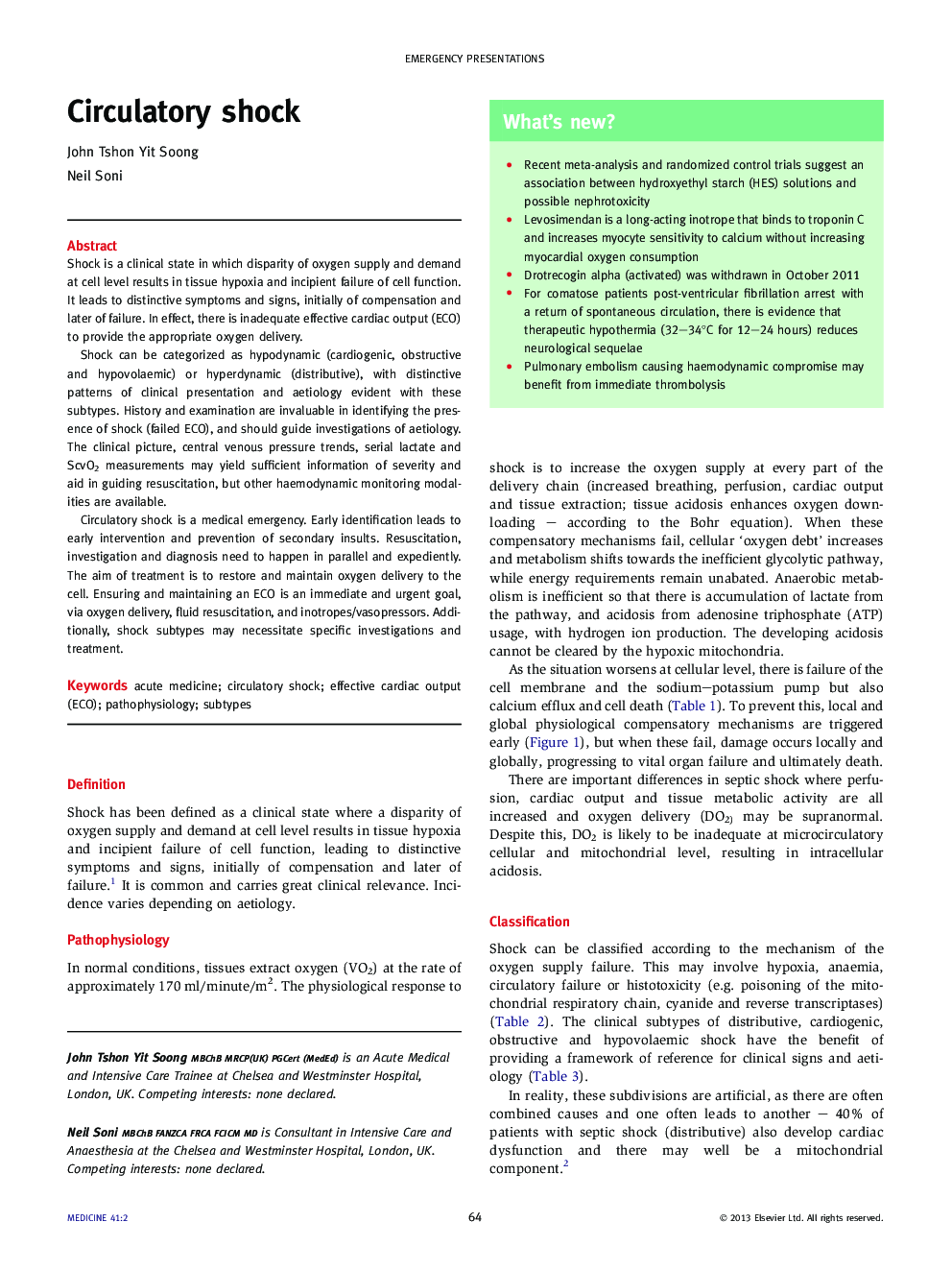| Article ID | Journal | Published Year | Pages | File Type |
|---|---|---|---|---|
| 3803915 | Medicine | 2013 | 6 Pages |
Shock is a clinical state in which disparity of oxygen supply and demand at cell level results in tissue hypoxia and incipient failure of cell function. It leads to distinctive symptoms and signs, initially of compensation and later of failure. In effect, there is inadequate effective cardiac output (ECO) to provide the appropriate oxygen delivery.Shock can be categorized as hypodynamic (cardiogenic, obstructive and hypovolaemic) or hyperdynamic (distributive), with distinctive patterns of clinical presentation and aetiology evident with these subtypes. History and examination are invaluable in identifying the presence of shock (failed ECO), and should guide investigations of aetiology. The clinical picture, central venous pressure trends, serial lactate and ScvO2 measurements may yield sufficient information of severity and aid in guiding resuscitation, but other haemodynamic monitoring modalities are available.Circulatory shock is a medical emergency. Early identification leads to early intervention and prevention of secondary insults. Resuscitation, investigation and diagnosis need to happen in parallel and expediently. The aim of treatment is to restore and maintain oxygen delivery to the cell. Ensuring and maintaining an ECO is an immediate and urgent goal, via oxygen delivery, fluid resuscitation, and inotropes/vasopressors. Additionally, shock subtypes may necessitate specific investigations and treatment.
